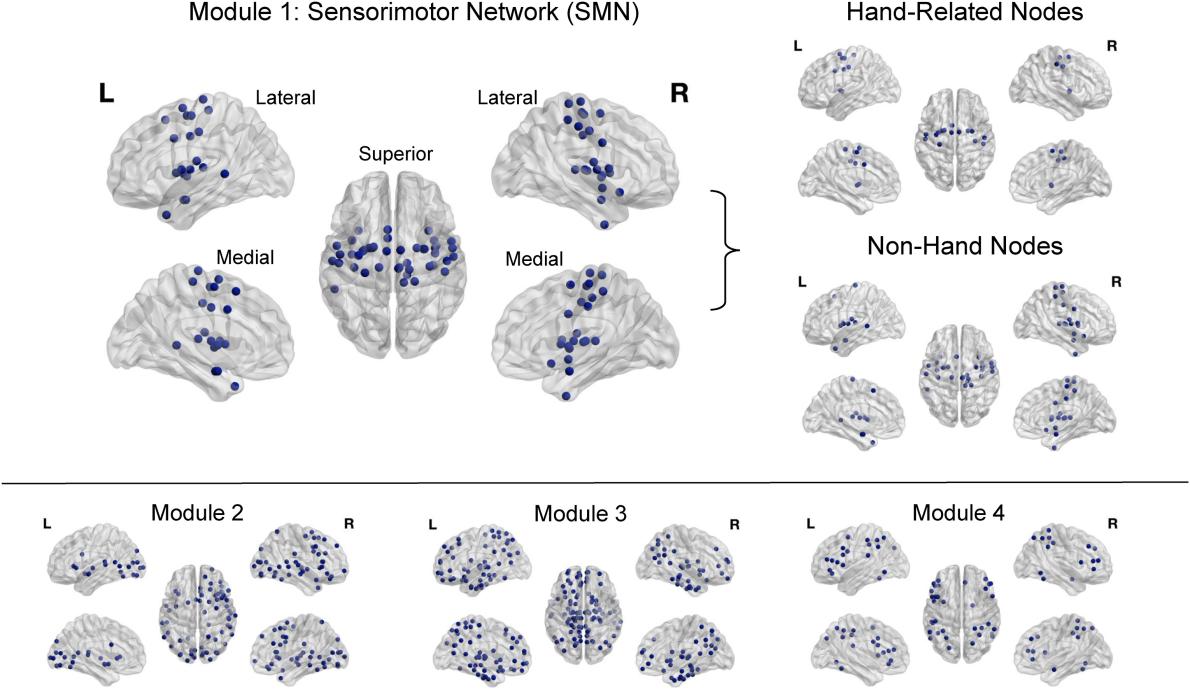
As a surgical treatment following amputation or loss of an upper limb, nearly 200 hand transplantations have been completed to date. We report here a magnetic resonance imaging (MRI) investigation of functional and structural brain connectivity for a bilateral hand transplant patient (female, 60 years of age), with a preoperative baseline and three postoperative testing sessions each separated by approximately six months. We used graph theoretical analyses to estimate connectivity within and between modules (networks of anatomical nodes), particularly a sensorimotor network (SMN), from resting-state functional MRI and structural diffusion-weighted imaging (DWI). For comparison, corresponding MRI measures of connectivity were obtained from 10 healthy, age-matched controls, at a single testing session. The patient's within-module functional connectivity (both SMN and non-SMN modules), and structural within-SMN connectivity, were higher preoperatively than that of the controls, indicating a response to amputation. Postoperatively, the patient's within-module functional connectivity decreased towards the control participants' values, across the 1.5 years postoperatively, particularly for hand-related nodes within the SMN module, suggesting a return to a more canonical functional organization. Whereas the patient's structural connectivity values remained relatively constant postoperatively, some evidence suggested that structural connectivity supported the postoperative changes in within-module functional connectivity.
Publication Link: https://www.sciencedirect.com/science/article/pii/S266695602400028X
Citation: Madden, D. J., Merenstein, J. L., Harshbarger, T. B., & Cendales, L. C. (2024). Changes in functional and structural brain connectivity following bilateral hand transplantation. NeuroImage: Reports, 4(4), 100222. https://doi.org/10.1016/j.ynirp.2024.100222
